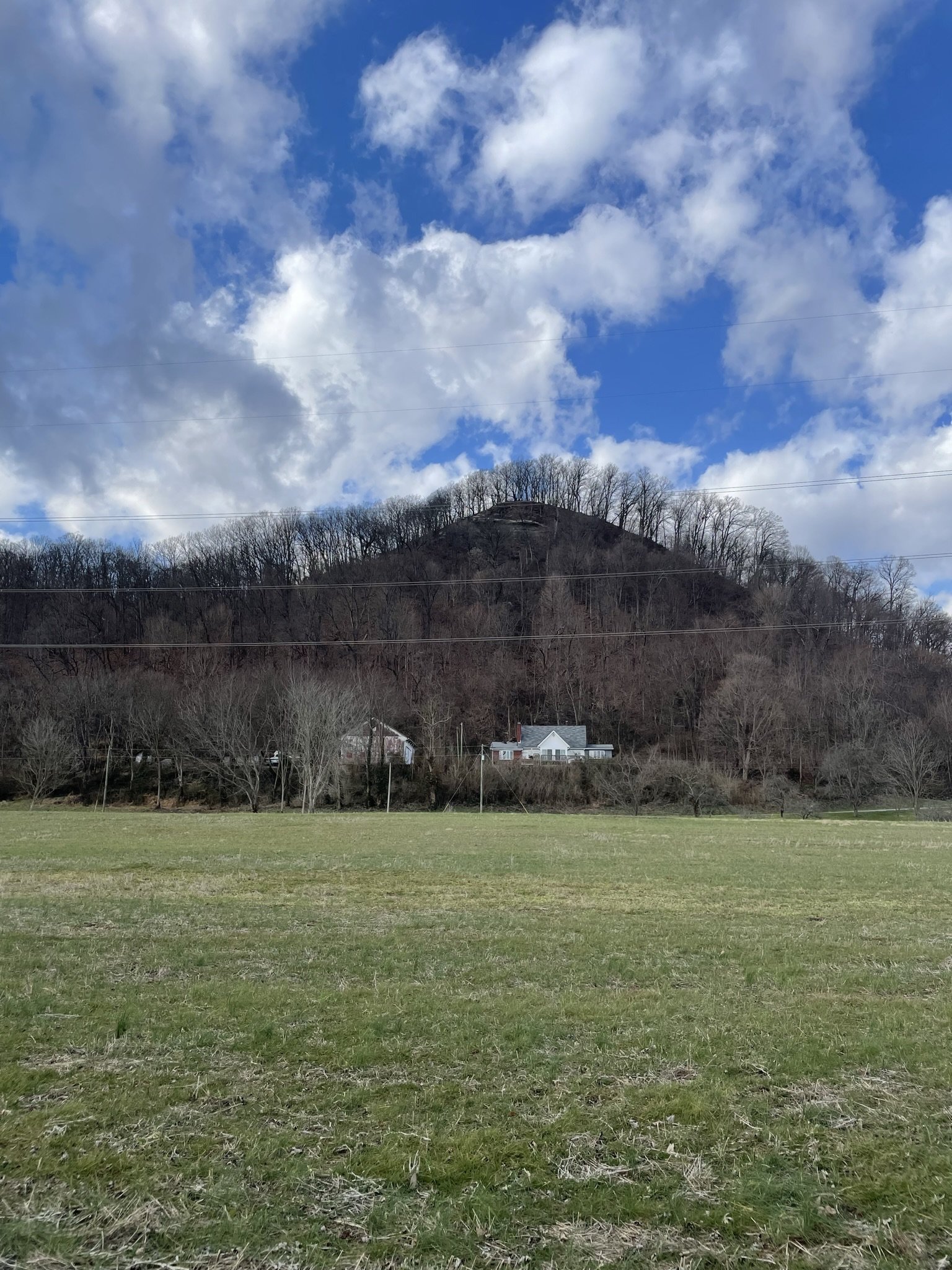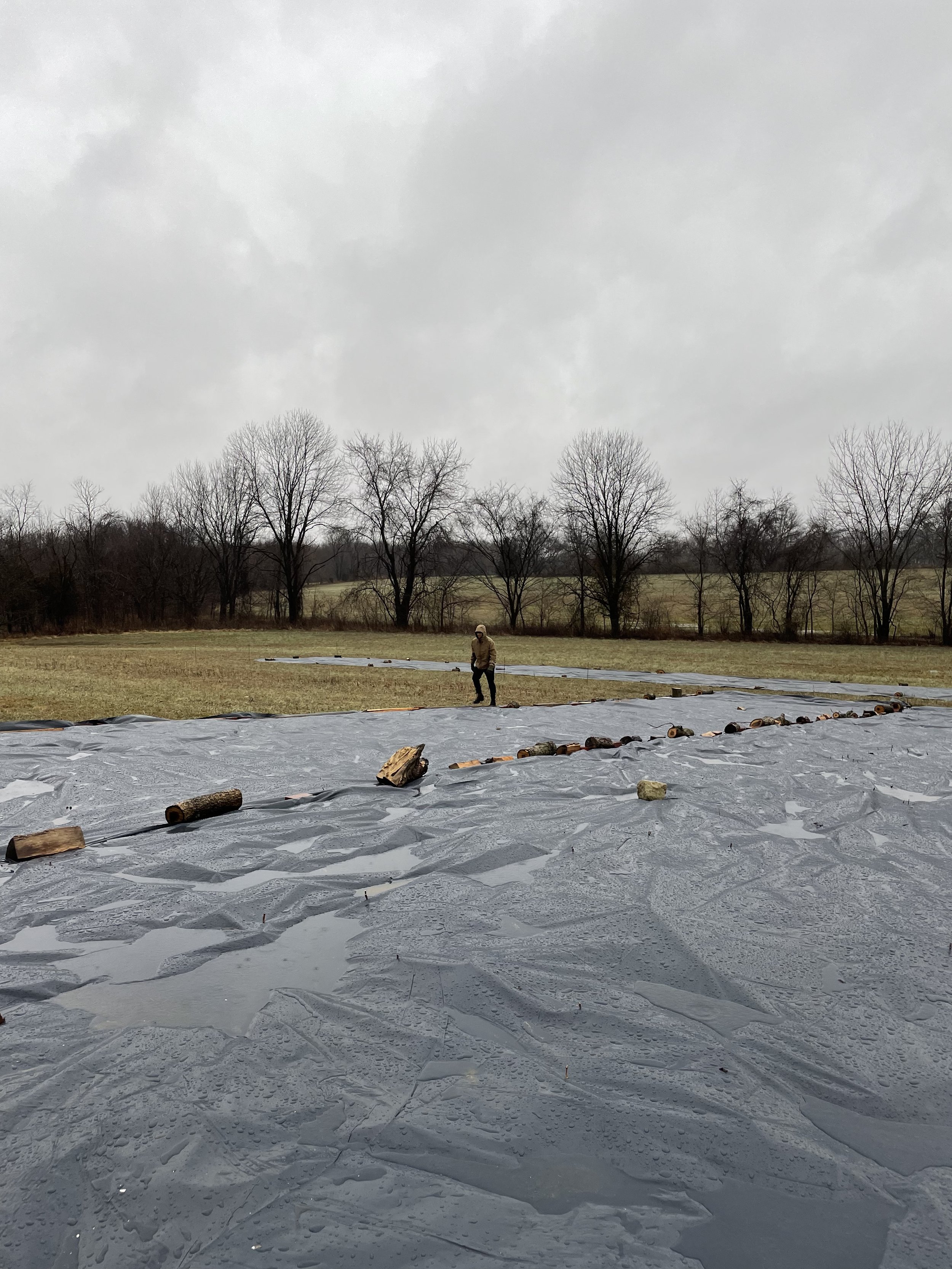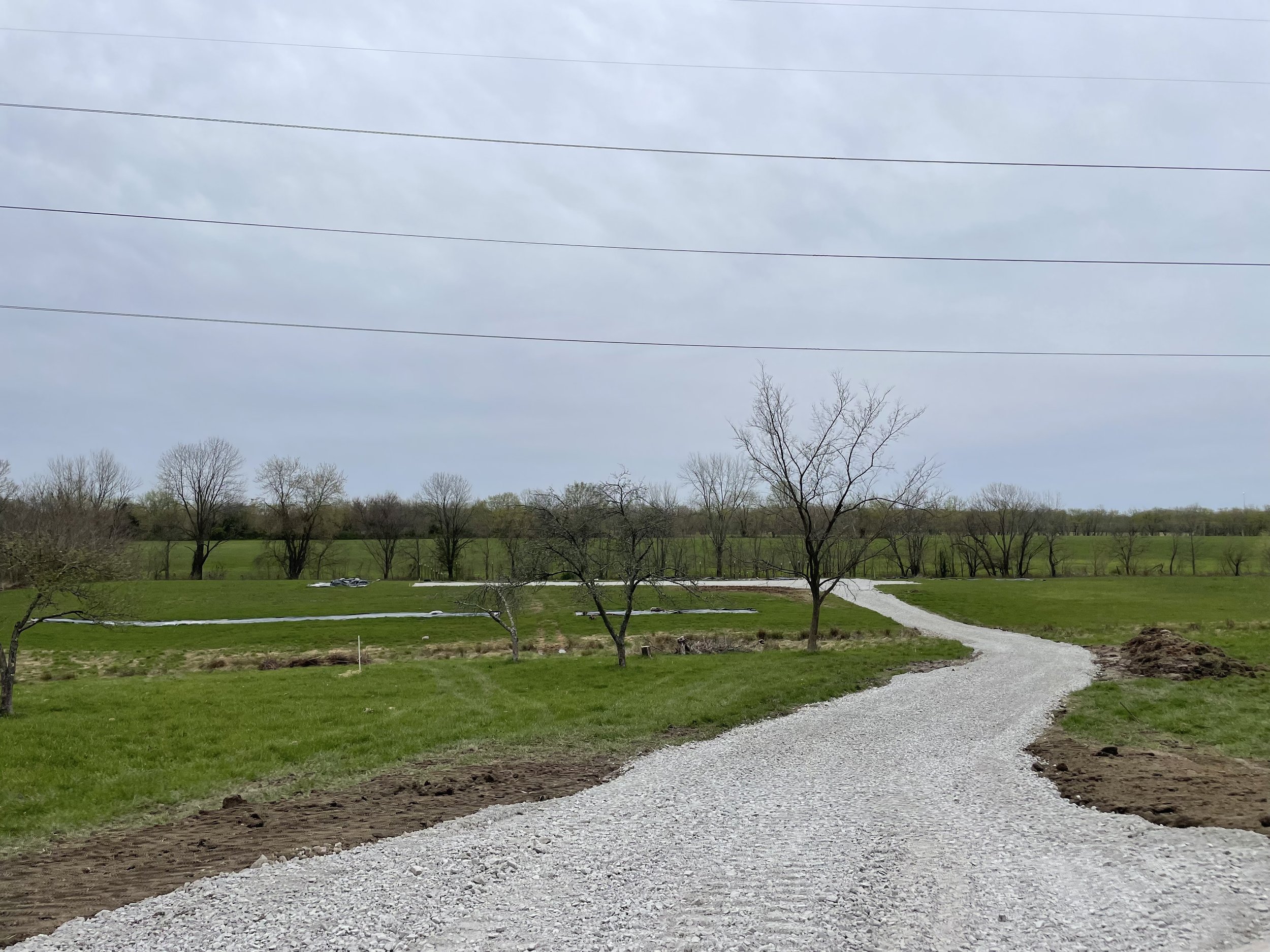Building Up
Taking shape
April 19th 2022
Well, we are in month 4 of building the farm and a LOT has happened since the start of the year, so I thought I’d provide a month-by-month update of the farm progress.
JANUARY
January included a lot of planning and purchasing for the flower farm. We purchased seeds, plants, and were taking care of the transplants from our previous garden farm. Life signs appeared from those transplants - small leaf nodes appeared on rose branches. Flower seeds were sown in this month, and roses purchased were scheduled to arrive in March.
Our main focus was on layout and design of the flower farm. It meant doing measured sketches of the farm on large drawing paper. We then would go out into the field with stakes and measuring tools and mark off where we wanted those beds to be based on the design. Since we are in the wetlands, it was essential these beds be set out of the frequent flood areas which we were able to accomplish. We were thinking about these beds as permanent, long term locations for plants - considering their fullest growing potential and making certain there’d be enough room for expansion and additions too.
We purchased a Farmer’s Friend caterpillar tunnel that’s 14 x 50ft for season extension. This was a huge purchase and incredibly exciting for us, as we felt we’d be able to have spring flowers.
FEBRUARY
It was time to silage tarp the areas to kill the weeds. The farm had no access point, and we were getting the tractor stuck - so nearly everything had to be walked out to the farm - including weights for those tarps. We battled those tarps damn near every day against the wind to keep them down. These tarps would catch wind like a sail and lift off to some other portion of the farm. That seemed like all we did for a time and it was very disheartening and exhausting. There are no wind breaks where we are — just open fields and wind would come from every direction. I surrendered to it, and replacing tarps back in position became a daily chore.
We met our farm extension agent, Gina - who gave us great advice for farm development and weed management.
We had our old well assessed for being able to irrigate the farm. It is 11 feet deep, which according to our experts we’re working with is not very deep and not sufficient. Though the water capacity and replenish rate of the well would not suffice for farm irrigation, we turned to our pond and decided to move forward with that. This pond irrigation pump would hopefully be supplied by solar power, making our farm “off the grid” and self-sustainable.
We pruned our orchard trees!
MARCH
The weather began to warm up, and wet days of February gave way to dry early days in March. Those days allowed us to get our tractor out to the farm to start creating beds. We carried out plants from our makeshift nursery of transplants loaded in the tractor bucket. We started with the woody perennials. Lilac, spirea, ninebark, and hydrangea were among those planted first. Weed fabric and drip irrigation were laid, though no access to water was available.. We laid it anyway so we could tie in to the water source once it was there. The ground there holds a good amount of water, so I was not worried. Plus I could count on inevitable spring rain to water them in.
Ran into issues getting permitted to put up our greenhouse tunnel that we did not expect. This snag in plans hindered our possibility for an early spring crop - such as tulips, ranunculus, and early spring annuals. The greenhouse sat in pieces in our barn. We are being required to go before the Board of Appeals for our county to get the permit. The public hearing is in May.
We also worked to clear around the pond — our extension agent told us that wild rose carries a fungal disease called rose rosette that can destroy roses, particularly knockouts, spread through pests. We created massive piles of thorny rose and honeysuckle and saplings. This was a severely under kept area of the farm, so we are still working on that.
Toward the end of March, we transitioned to getting the rose field prepped. The rose field is in two parts. Half of the rose field is to be a hedge of florist-sought garden roses with 11 varieties, 12 per row, including Distant Drums, Koko Loko, and Honey Dijon. I dug holes where these roses would go in a grid 4 feet apart.. totaling 132 holes! I planted what transplants I had in the nursery. We got our first shipment of roses later that month.
APRIL
Since the gridded portion of the rose field was complete, I began to design the rose garden portion of the rose field. This would contain varieties I wanted to trial to potentially create hedges with, plus leave an open area for small intimate events to occur someday. I decided to lay out the garden tonally - meaning that roses of like-color would be near each other along with like-colored perennial flowers. Additionally, the garden would have an ombre effect - meaning those colors would fade to their next closest relative color. It’s been really fun to plan. I can’t wait to see it in bloom!
Roses began arriving week after week en masse allowing us to complete the hedge field and rose garden, and turn our eyes to starting the annual planting portion of our farm. It will be a massive job! Michael began sowing seeds for the vegetable farm, and gathering materials. I started to harden off flower seedlings.
We tilled beds for blueberries and sunflowers, and tarped those beds to kill any weed seeds. Sunflowers don’t get planted until May and blueberries are being collected one-by-one since the varieties I’m buying are pricey.
Then all at once, we started getting massive, long-awaited projects done the middle of the month. The driveway out to the farm was created in 1 day, deer fencing was installed, rose arch at the flower farm entrance was created, compost delivered, pond irrigation installed, entrance beds completed! And that’s where we are now.. We hope to have annual beds created and planted, and the greenhouse put up by the end of April. Things are really taking shape and the wind is under our wings.
-Kristen















